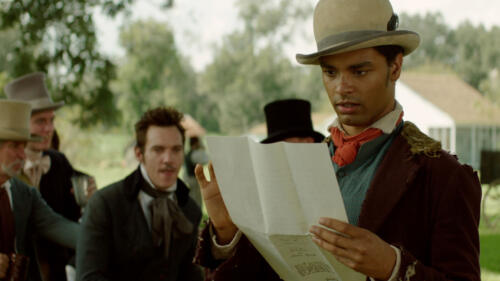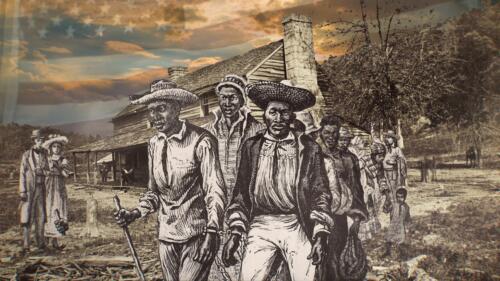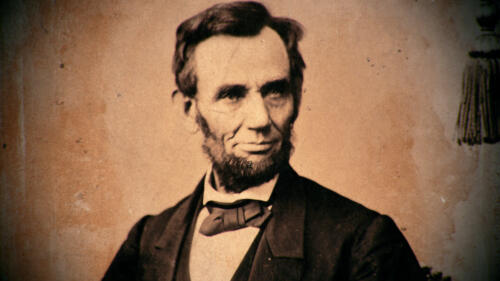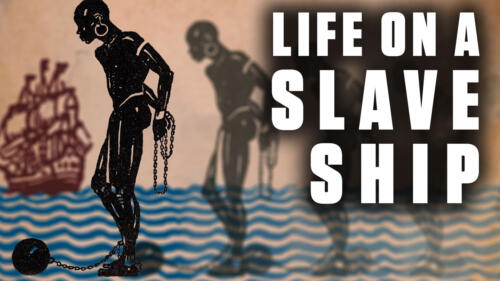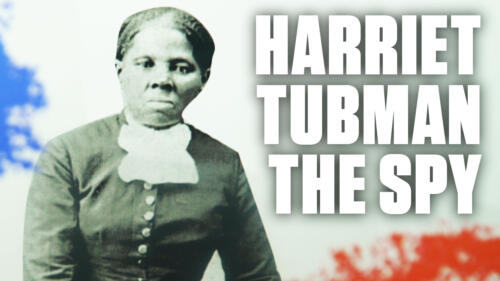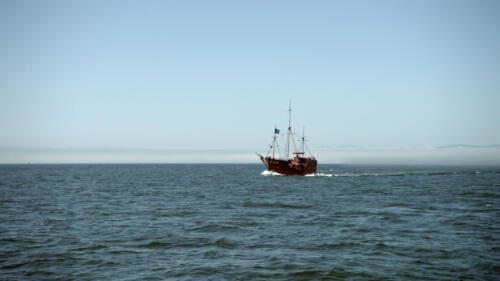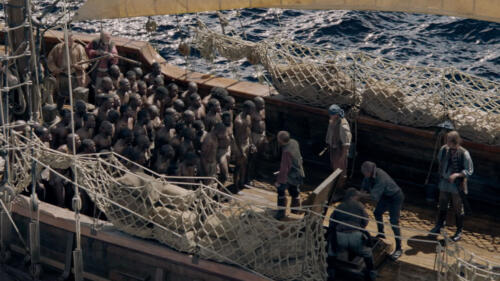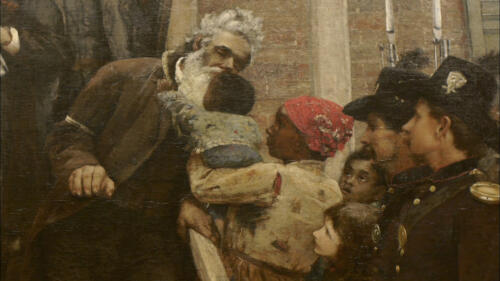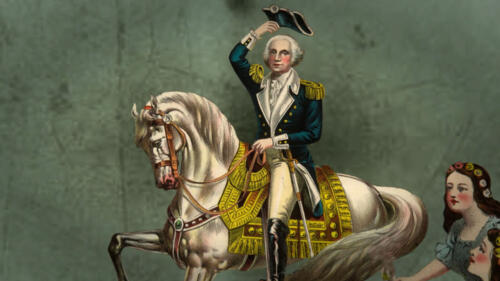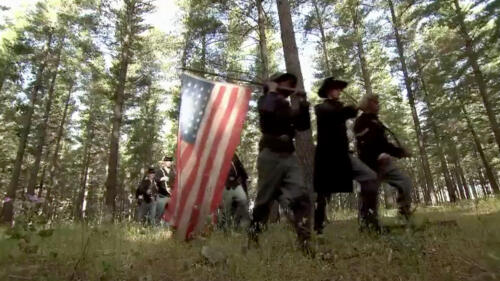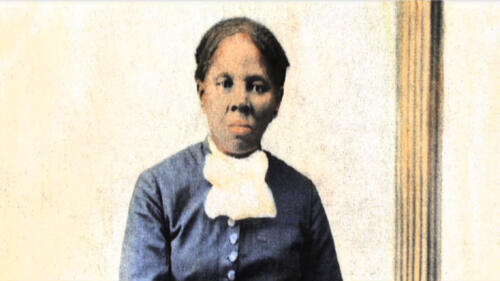Slavery
Slavery was widely practiced throughout the ancient world, and the exploitation of enslaved Africans fueled the growth and economies of the American colonies in the 17th and 18th centuries. After the American Revolution, the Declaration of Independence promised liberty for all men, but did not end slavery. Conflict over the institution eventually drove the young nation into civil war.
Featured Overview
Historians and experts examine the American system of racialized slavery and the hypocrisy it relied on to function.

Featured Overview
Historians and experts examine the American system of racialized slavery and the hypocrisy it relied on to function.
Start Here

From the role of women to its global scope, here are some lesser-known facts about the transport and enslavement of African people.

In navigating lives of privation and brutality, enslaved people haggled, often daily, for liberties small and large.

From elaborate disguises to communicating in code to fighting back, enslaved people found multiple paths to freedom.

Debate over the Wilmot Proviso inflamed North-South divisions ahead of the Civil War.
Harriet Tubman
Harriet Tubman: Soldier/Spy
Harriet Tubman, former slave, is known for her role in the underground railroad, but did you know she served in the union army as a soldier and a spy?
2:23 watch
3 Famous Abolitionists
Explore All Related Topics

These women reshaped the fight against slavery by suing for freedom, rescuing the enslaved and teaching the newly freed.

The Founding Father's 38-year relationship with Hemings, a woman he enslaved at his Monticello estate, has raised controversy for two centuries.
Celebrating Ramadan is one of the Five Pillars of Islam, but continuing that ritual wasn't always easy, especially for slaves in the New World.

Slavery in America was the legal institution of enslaving human beings, mainly Africans and African Americans. Slavery existed in the United States from its founding in 1776 and became the main cause behind the country's bloody Civil War. Slavery officially ended in America with the passage of the 13th Amendment following the Civil War's end in 1865.

From the role of women to its global scope, here are some lesser-known facts about the transport and enslavement of African people.

Debate over the Wilmot Proviso inflamed North-South divisions ahead of the Civil War.

For this, historians consistently rank him as one of the worst US presidents.
Lincoln develops and enacts a permanent plan to abolish slavery, in this clip from Season 1, "Saving the Union."

The author of Crittenden Compromise argued his six amendments presented a good deal. But then-President-elect Lincoln drew a firm line.
Many find the Electoral College a frustrating system, and its history may force one to question whether it has a place in today's world.

'Cargo' was delivered to the southern states and the West Indies, but much of the shipping originated in New York City—in the abolitionist North.

For some, it was a rare time of respite; for others, an opportunity for resistance.

Just two years after the famed Amistad revolt, a mutiny rerouted the slaving brig Creole into British territory, where human bondage was illegal.

The colony of Rhode Island once had the highest percentage of enslaved people in New England, and was a dominant player in the global slave trade.
Harriet Tubman is known for her legendary efforts to free slaves via the Underground Railroad. And nothing, even the Civil War, would get in the way.

In 1848 William and Ellen Craft blurred the lines of race and gender in order to escape slavery.

Loved ones could be sold away at any time. Here's how married couples coped.

The arrival of the first captives to the Jamestown Colony, in 1619, is often seen as the beginning of slavery in America—but enslaved Africans arrived in North America as early as the 1500s.

The widely circulated image of the enslaved man's wounds helped turn white Northerners against slavery.
Life aboard the ship was agonizing and dangerous; nearly 2 million enslaved Africans would perish on their journey across the Atlantic.
Harriet Tubman, former slave, is known for her role in the underground railroad, but did you know she served in the union army as a soldier and a spy?

The amendment, which officially abolished slavery in the United States in 1865, includes a loophole regarding involuntary servitude.

After Charles I of Spain signed an edict launching the transatlantic slave trade, human cargo on transatlantic voyages spiked nearly tenfold.

The story of the Clotilda and the people who built Africatown.

Zora Neale Hurston's searing book about Cudjo Lewis, brought to Alabama aboard the Clotilda—the last known US slave ship—took nearly 90 years to find a publisher.

Why couldn't enslaved people have resisted—or pulled themselves up from their bootstraps after Emancipation?

Slavery was so profitable, it sprouted more millionaires per capita in the Mississippi River valley than anywhere in the nation.
Historians and experts examine the American system of racialized slavery and the hypocrisy it relied on to function.
The slave auction was the epitome of the system's dehumanization.
Under threat of punishment, enslaved families found small ways to rebel against an oppressive system.
Historians and experts discuss the importance of the family unit in the lives of enslaved people.
Matthew Pinsker gives a crash course on the Compromise of 1850, the resolution to a dispute over slavery in territory gained after the Mexican-American War.

Explore 10 surprising facts about the bloodiest revolt in American slavery history.

A half-century after Congress banned the slave trade, a converted racing yacht defied American law in 1858 and made the last documented voyage of an American slave ship.
Professor Eric Foner discusses key people and events in the history of the Underground Railroad.

From a man who mailed himself to freedom to a husband and wife team of impostors, learn the true stories behind five of American history’s most audacious escapes from slavery.

The 1839 mutiny, led by an African rice farmer known as Cinqué, galvanized the abolitionist movement.

An investigation has revealed that one of Colonial New England’s most aristocratic families participated in the slave trade.

With Oscar buzz building around "12 Years a Slave," find out more about the mysterious life of protagonist Solomon Northup.

Douglass looked back on September 3, 1838 as the day when his “free life began,” but he encountered several close calls during his journey to freedom.

Find out about seven groups of enslaved people who risked everything for a chance at freedom.
Slavery is a central paradox of much of American history. In fact, most of the country's founding fathers owned slaves.
Slavery became an industry for the first time in history when millions of African men and women were sold as slaves to Europeans.
John Brown's failed attempt to loot the armory at Harper's Ferry sparks the beginning of abolition.
America is at the brink of a Civil War as cotton spreads west and threatens to expand slavery into new territories.
Born a slave, Harriett Tubman became a famous "conductor" on the Underground Railroad, leading hundreds of slaves to freedom.

The Harper's Ferry raid was an 1859 assault by an armed band of abolitionists led by John Brown on the federal armory in the small town of Harper's Ferry, Virginia. It was intended to be the start of establishing an independent freehold of freed slaves, but it failed and was a main catalyst leading to the Civil War.

Sally Hemings (1773-1835) was an enslaved woman owned by Founding Father Thomas Jefferson (1743-1826). Hemings and Jefferson had a longstanding romantic relationship, and had at least one and perhaps as many as six children together.

Nathanial “Nat” Turner (1800-1831) was a black American slave who led the only effective, sustained slave rebellion (August 1831) in U.S. history.

The Fugitive Slave Acts, passed in 1793 and 1850, were federal laws that allowed for the capture and return of runaway enslaved people within the United States.

The Missouri Compromise, an 1820 law passed amid debate over slavery, admitted Missouri to the Union as a state that allowed slavery, and Maine as a free state.

The Compromise of 1850 was made up of five bills that attempted to resolve disputes over slavery in new territories added to the United States in the wake of the Mexican-American War (1846-48). It admitted California as a free state, left Utah and New Mexico to decide for themselves, defined a new Texas-New Mexico boundary, and made it easier for slaveowners to recover runway slaves.

John Brown was a militant abolitionist whose violent raid on the U.S. military armory at Harpers Ferry, Virginia, was a flashpoint in the pre-Civil War era.

The Amistad Case took place in 1839 when 53 illegally purchased African slaves were being transported from Cuba to the U.S. aboard the Spanish-built schooner Amistad. En route, the slaves staged a successful mutiny. They were later intercepted and thrown in jail. A federal district court judge ruled they were not liable for their actions. Former president John Quincy Adams argued on behalf of the slaves before the U.S. Supreme Court, which eventually determined the Africans to be free.
